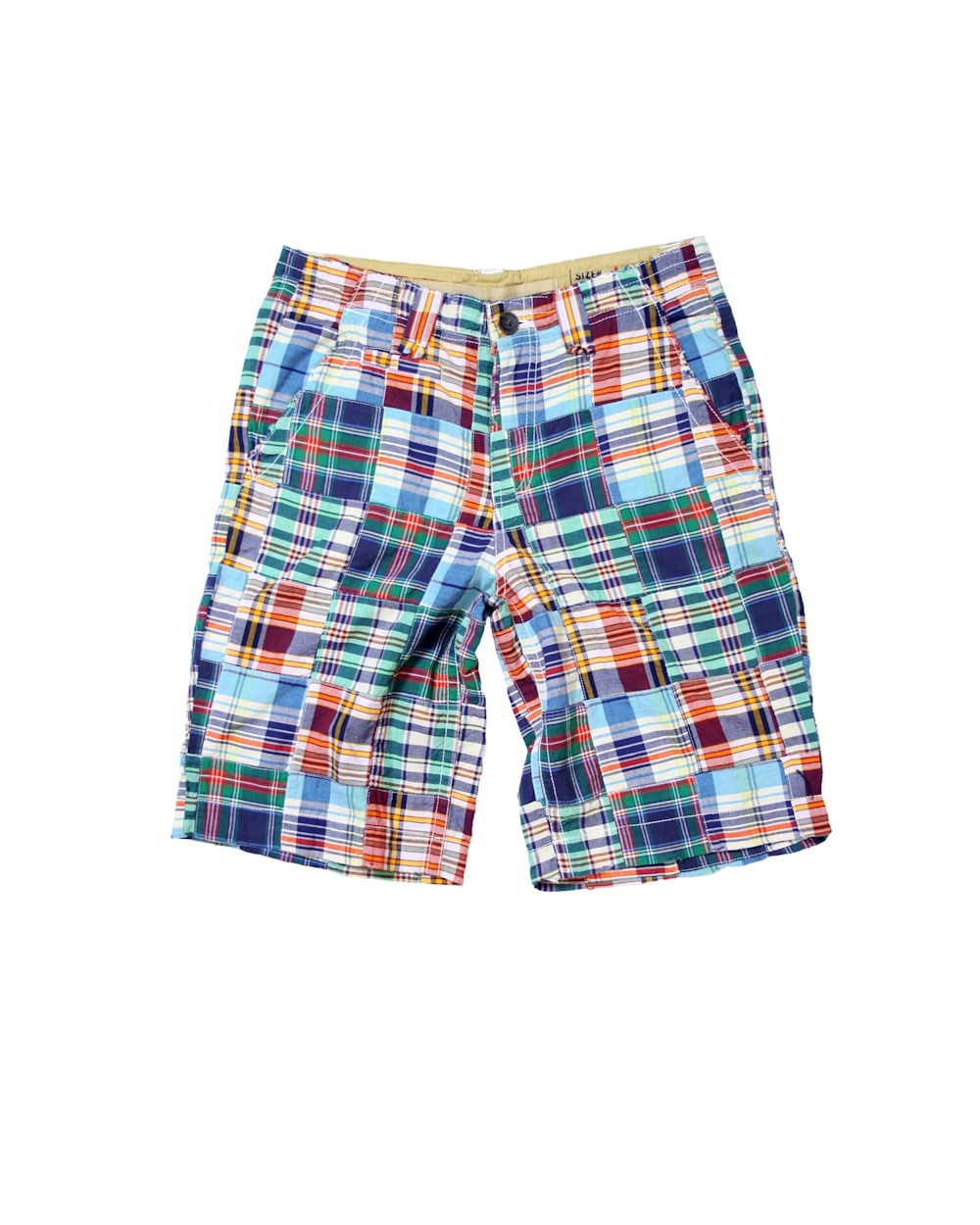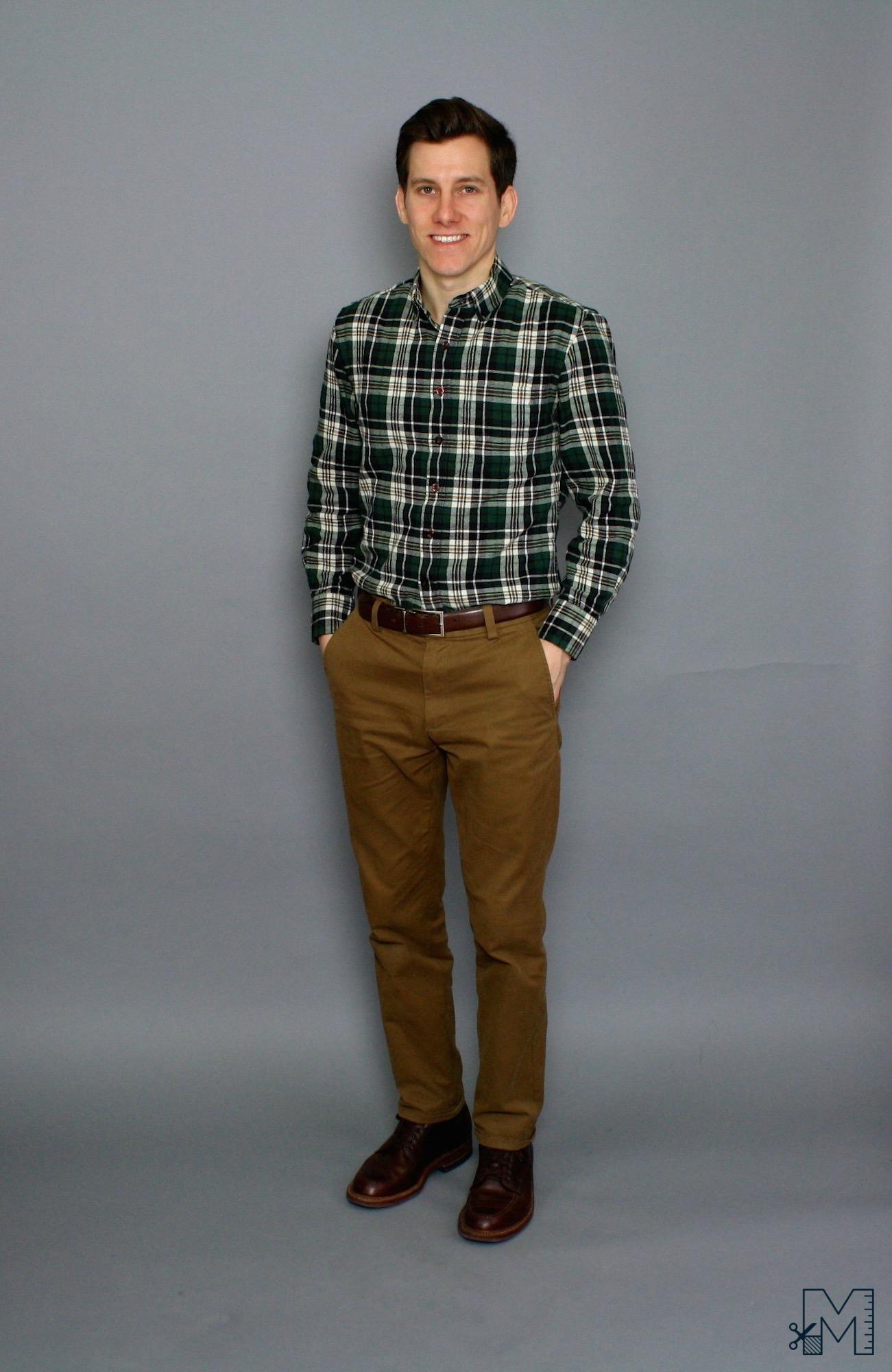Bold and distinct, plaid madras is associated with American prep. How did that happen, though? And can you pull it off sans the country club connotations?

Madras plaid has always loomed large in my life. The patchy design is both relevant and nostalgic for me. See, my Connecticut-bred parents and I summered in Nantucket, where madras is a staple. Just out of habit, plaid shorts are my go-to for beachwear. I understand that it’s a polarizing style, though. It’s hardly subtle, and to many, it evokes images of villains in John Hughes films.
Still, madras is important to the American style. There’s simply no denying that. And as a good American, I implore you to not only learn more about it but to explore different ways to wear it. You’d be surprised at how easily you can incorporate this quilt-like composition into personal styles outside of the Ivy League realm.
But first, what exactly is madras plaid? What makes it madras compared to simply just being plaid?
What Is Madras Plaid?

True madras isn’t just a type of plaid, but a type of cloth. It’s defined by the slubbed lightweight cotton surface and, often (not always), a patchwork of plaids. They’re usually in loud colors, the different patches visually correlating in one way or another.
This doesn’t necessarily mean that the lines will align perfectly between each patch. It could mean that there’s a relatively consistent palette. The contrast isn’t as purposeful as you’d find on certain patchwork quilts. In the strictest sense, both sides of the fabric would have the same pattern.
Compare this to plaid, which can be any pattern of intersecting horizontal or vertical lines that creates a checkered design. It can also be on any type of fabric, like flannel, for example. All that to say, all madras is plaid, but not all plaid is madras. These days, many use the words madras and plaid interchangeably, which isn’t technically correct. However, no one would bat an eye if you referred to a brightly-colored pair of shorts sporting a grid-pattern plaid as madras.
Relatedly, many interchange the words tartan and plaid. However, again, in the strictest sense, a tartan is technically a plaid that represents a family or clan. The Burberry cheque could technically be referred to as a tartan since it’s assigned to a fashion house. That being the case, if you hire a patternmaker to design a madras that represents your family, that would make it a madras tartan.
There are also “madras-style” fabric garments. Manufacturers might make these pieces from madras-designed fabrics that aren’t necessarily lightweight cotton or slubbed. Madras is mostly defined in loose terms these days. In a way, once you’re familiar with its general aesthetic, you know it when you see it.
Madras Plaid Patchwork: A Little History

Madras has become synonymous with New England East Coast style. Still, it didn’t originate in the American East but in the Far East. The city of Chennai in southern India was formerly the city of Madras; this is where the fabric gets its name and where it came from.
If you think about the visual culture of South Asia, this actually makes sense. There’s a sartorial tradition there of celebratory colors, meticulous craft, and embracing the natural textures of organic textiles.
Madras fabric was handwoven by Southeast Indian artisans. The cotton is so soft and breathable because they used short-staple cotton that needed to be carded because it’s too fragile to comb. This is when the signature slubbing happens, too. Requiring a great deal of skill, the artisans would disentangle and align the cotton fibers. They’d then use organic vegetable dyes to achieve the lively color palettes.
So, how did this Asian cloth art become a hallmark of Ivy League culture? It’s pretty roundabout, actually. But it makes a lot of sense and sheds light on Madras’s sartorial identity. Traders from the British East India Company set up shop in Chennai in the 17th century. As Europeans did with teas and spices, they started exporting Madras to Europe.
The Scots took a particular shine to it, likely because it wasn’t unlike their own tartans. In the 19th century, Scottish soldiers in India found madras to be practical in the hot climate.
From Asia to Connecticut: How Madras Became an American Staple

In 1718, Elihu Yale made a large donation to his namesake college, including a gift of Madras (Yale was the governor of Chennai). The fabric soon became prominent on Ivy League campuses. Naturally, New England had much hotter summers than their cultural mothership, old England.
Moreover, it offered the perfect sartorial balance. Madras is similar enough to ancestral British style (again, tartans), exotic enough to show a sense of culture, and just loud enough to suit American bluebloods in a way that separates them from British bluebloods.
In 1897, Sears added a madras shirt to their catalog, and the rest is history.
Madras Plaid Shorts: Timeless and Surprisingly Versatile

Shorts are the most versatile member of the madras plaid family. I recommend three ways of styling them, depending on your personal tastes.
If you do like Northeastern preppy style, you’re welcome to lean into that. It’s the most natural context for them. Or you can pull off the equivalent of a high-low by wearing it with mindfully contrasting pieces. And finally, you can go the practical route. Here’s what I mean for each.
Classic Prep

Madras is the quintessential shorts fabric for preppy style. Ivy Leaguers in the ‘60s wore them to their summer holidays in Nantucket, East Hampton, and even abroad. Wear them with a crewneck sweater, a short-sleeved button-down, and a cable-knit vest, or even with a t-shirt and a cashmere pullover thrown over your shoulders. Go for white
Believe it or not, if you’re going to a casual summer wedding, you can even do a high-low with a blazer, tie, and madras shorts. You get extra credit points if your jacket is seersucker. I saw that pairing all around the Harvard campus.
Mindful Contrasts Add a Cool Factor

The patron saint pairing preppy separates with contrasting pieces in New York is it-girl, Chloe Sevigny. Fashion-forward guys can do a menswear version of this. Try wearing your madras shorts with an oversized, waxed chore coat and
Or heck, go for an untucked solid crewneck and finish it off with some Converse
Don’t Forget That Madras Shorts Are Practical
Finally, remember that one of the reasons madras gained popularity is because of how practical it is. It may not be workwear exactly, but it’s lightweight, perfect for the coasts, and partners naturally with other like pieces. Consider wearing your shorts with fishermen’s sweaters, linens, and even windbreakers. Accessories to consider include boater hats, fishermen’s hats, dive watches, and anything made of sailcloth.
Madras Plaid Pants: Bold But Temperate

Madras pants are definitely a statement.
However, if you’re interested in wearing them without being too loud (though keep in mind you can never mute madras pants), there are ways. For example, you can wear them with a dark-colored button-down. Long sleeves will temper the pants more than short sleeves since, of course, there’s more fabric there. To further bring balance, wear your shirt untucked. Choose a shirt color in the same shade as the darkest color in the pant patchwork.
And by the way, if you’re going the preppy route, it doesn’t have to be stuffy. After all, Madras is meant to be relaxed. Wear your pants with sporty pieces associated with the Northeast. Rugby shirts, cricket sweaters, and equestrian pieces are all good examples.
Madras Plaid Shirt: Any Guy Can Pull It Off

The most universal Madras garment is the Madras shirt. It’s just a lightweight cotton top that can be paired with any piece of classic menswear. Wear it with jeans and
And if you want to wear the shirt as an accent, just put something over it. Consider a blazer, an open utility shirt, a Harrington, or even a leather jacket.
Personally, I love wearing a madras shirt with military pieces like field shirts and olive chinos. It takes the bright, fun look of the plaid and brings it down to earth. Moreover, both madras and military wear are casual and functional.
Madras Plaid Blazer: If You Want To Go All In

The boldest of all the madras pieces, a plaid blazer is definitely a statement. And this is the case for any type of plaid blazer, not just madras. What’s great about madras blazers, though, is that the structure of the blazer anchors the fun, lively aesthetic of the patchwork.
The key to pulling off a madras blazer is context. You’ll see madras blazers on boats, beach parties, and even garden parties and golf-related events—especially in the south. Southern gents aren’t afraid of a bit of color. In fact, I’ve found that the pastels and plaids we often associate with the Northeast are more prominent in the Southeast these days! So, if you’re going to a summer beach wedding in Charleston, don’t be afraid of sporting that madras blazer.
Want to go full prep? I recommend wearing your blazer with a dress shirt, a knit bowtie, a cable-knit sweater vest, and light-colored chinos or slacks. You can even go for light-colored dress pants, perhaps in cream or beige. Madras may be casual, but it’s also elegant. It’s a quirky kind of elegant, but elegant nonetheless. As such, it goes beautifully with dressier pieces.
Otherwise, you can also just wear your madras blazer with navy chinos, dress shoes, and a blue button-down. In combinations like this, the blazer is still the star of the show, but with a touch of business.
And for the boldest of the bold? A full madras suit. I personally couldn’t pull it off, but if you want to go a dandy route with your outfit and you’re confident in it, go for it! Madras is casual, and there aren’t any hard and fast rules.
Is Madras Just for Preppies and the Country Club Set?

Absolutely not. While madras is a cornerstone for Ivy League style, it isn’t just for gents who went to prep school. First of all, I hope all of the suggestions above have proven that. Second, historically, men of all classes and personal styles have worn madras. From a functional perspective, it’s a practical fabric during the warm seasons. And as you now know, it didn’t even originate in New England; it’s simply where it was popularized in America.
That being the case, you can always (respectfully) channel its roots with your style. An unstructured madras shirt with black linen pants and open-toed leather sandals? That’s more “vacationing in Thailand” rather than “summering in Nantucket” if you ask me.
Did you know that madras is an important fabric in Nigeria? They call it George fabric. The Portuguese introduced and used it in important ceremonies and rituals. Feel free to look that up for some non-preppy style inspiration, too! Blue-blooded Americans may love madras, but they don’t own it.
Conclusion: More Versatile Than You Think
The main thing I’d like you to take away from this is that madras plaid is so much more than what our culture may have you think. It’s functional, its roots are in South Asia, and many cultures embrace it! As such, there are so many ways to style it.
Temper it with dark colors if you want it to be an accent. Lean hard into it with other summery pieces. Or, go back to its roots and wear it on an Asian vacation!
Of course, at the end of the day, there’s nothing wrong with going for that coastal New England approach either. Just because Madras is bright and lively, it doesn’t mean you can’t wear it in many contexts. Madras can go a long way.
How do you wear Madras? Let us know in the comments below.





